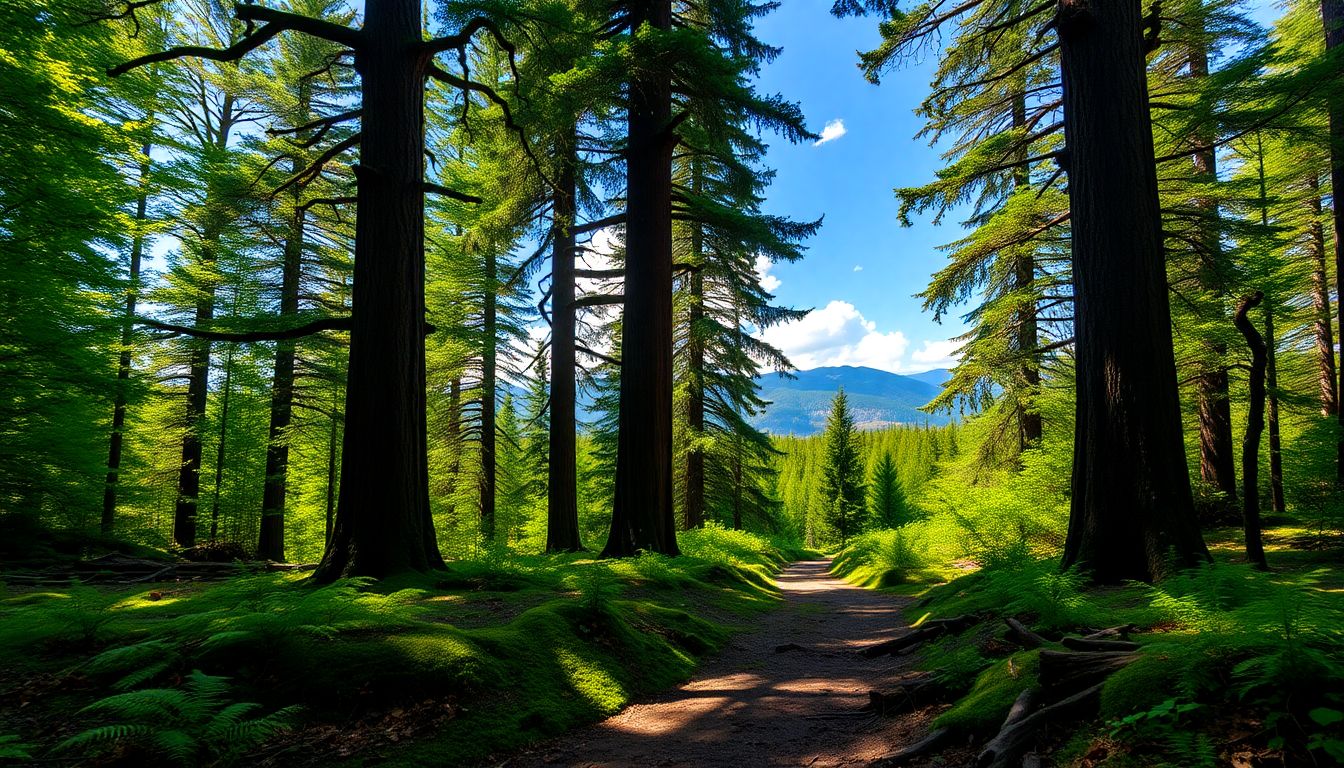Introduction
Forests in the USA cover one-third of the nation. They are important for wildlife, drinking water, and fresh air. People from all walks of life visit forests for recreation, relaxation, and adventure. These beautiful green spaces tend to boost the economy by creating jobs in timber, tourism, and sundry other pursuits. But forests have undergone many threats, which make their conservation all the more pertinent today. Therefore, exploring America’s forests will show their beauty and their importance. We must also take it upon ourselves to provide future generations the same opportunity.
The Diversity of Forests in the USA-Types of forests over the Nation
US forests fall into many categories dependent on their local climate and plants. Among them are:
- Temperate forests: These generally occur in the eastern areas, have four seasons, and are mostly composed of deciduous trees that shed their leaves each autumn.
- Tropical forests: These occur only in Hawaii, with ample moisture and tropical forest vegetation, including endangered species.
- Boreal forests: Otherwise called taiga, located in the cold northern states like Alaska, where cold-resistant pine and spruce trees reside.
- Mixed forests: Mix of deciduous and evergreen tree species, largely occurring in the Midwest.
Regions of the USA Mostly Covered by Forests
Pacific Northwest forests: These are wet and cool, being home to giant redwoods and Douglas firs and lying in Oregon and Washington states.
Southeastern forests: These forests are hotter and more humid, composed primarily of tall pine and hardwood trees, with the states of Georgia and Florida.
Rocky Mountain and Great Plains forests: With steep terrain, these forests are characterized by pine, aspen, and fir, spread out in Colorado, Montana, and the Great Plains.
Unique Ecosystems of American Forests
Ancient forests: Such ancient woods were left untouched and uncut for over two hundred years. These are home to endangered plants and animals.
Forests maintained by fires: A good number of the forests in America nurture fires as a natural way to clear out the old and allow for the new.
National parks and protected areas: Parks such as Yellowstone and Yosemite: the perfect refuge for wildlife and people.
Major Key Areas of Forests and National Parks
Yellowstone National Park
Yellowstone is the first national park in the USA, created in 1872. Most of its forests are lodgepole pine and Douglas fir. Visitors can watch bears and wolves, and elk moving freely. The forests in Yellowstone provide vital habitats for wildlife and maintain the health of nature.
Redwood national and state parks
Here are some of the tallest trees on Earth–Redwoods in excess of 350 ft high. These forests are set on California’s coastal landscape. Conservation goes a long way in ensuring the giant trees survive for posterity.
Appalachian Mountains forests
From Alabama to Maine, the forests here are abuzz with life. They host bald eagles, black bears, and many rare plants. The hiking and camping potential in this region attracts outdoor lovers.
Forests and parks of notable interest
Black Hills Forest: Being in South Dakota, it is known for its caves, wildlife, and the famous Mount Rushmore.
Sequoia and Kings Canyon National Parks: The national park is well known for giant sequoias, including the General Sherman Tree, supposedly one of the largest trees living.
What for? Economic benefit and endangered species protection and for seeing things that cannot be seen anywhere else.
Ecological and economic significance of American forests
Environmental Functions
Forests thwart carbon dioxide, which fight against climate change. They become the homes for the different species and act like natural filters to purify the water and air. They also prevent soil erosion and reduce flooding.
Economic Contributions
The timber industry itself makes billions of dollars each year. But that is only wood because forests produce fruits like berries, nuts, herbs, and medicinal plants. Millions of people visit forests and parks for tourism, bringing in millions of supporting jobs.
Problems facing forests
- Deforestation and land-use change: Urban sprawl and farming cut down trees.
- Wildfires and climate change: Hotter, drier weather fuels more fires that destroy large forest areas.
- Invasive species: Non-native plants and insects threaten native ecosystems and weaken forests.
Conservation and Management Strategies
Federal and state policies
Laws such as the National Forest Management Act lay down rules for the sustainable use of resources. Agencies like the U.S. Forest Service and National Park Service are responsible for public land management with respect to recreation, conservation, and timber.
Sustainable forestry practices
Certification programs such as FSC and PEFC ensure responsible logging activities. Good practices include selective logging, replanting of harvested areas and habitat protection for wildlife.
What communities and individuals can do
Awareness creation and responsible outdoor activities can be avenues in which everyone contributes. Support conservation groups and donation to forest conservation organizations.
The Future of Forests in the USA
Emerging trends and innovations
Replanting projects are new trees planted as replacements for ones lost. With technology like satellites and drones, scientists can monitor the health of forests in real time.
Roles of climate change
With the increased temperature, many species will be at risk and may also change their growing conditions. Possible measures include restoring natural fire cycles to prevent extended fire cycles and planting trees resilient to adverse changes in the climate.
What people can do
Cut your carbon footprint using less energy and driving less, join or support local conservation efforts, and always follow rules when exploring natural areas.
Finally
America’s forests are treasures of life, economy, and recreation. They suffer the greatest threats, but smart management and your effort in doing the little you can will go a long way in ensuring that we keep them. Every effort counts in protecting these beautiful, vital ecosystems. Support policies and practices that keep America’s forests healthy for all.
